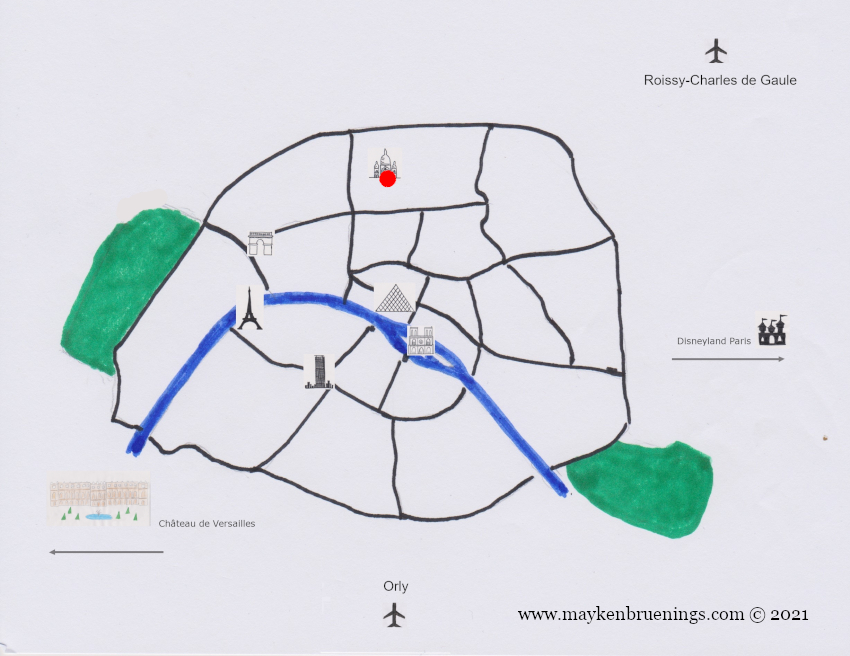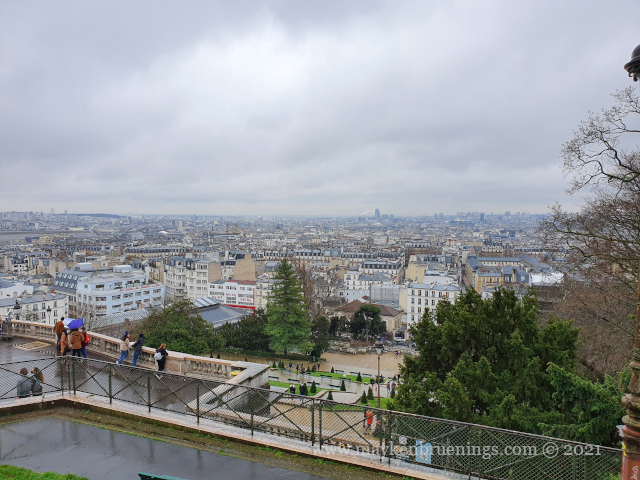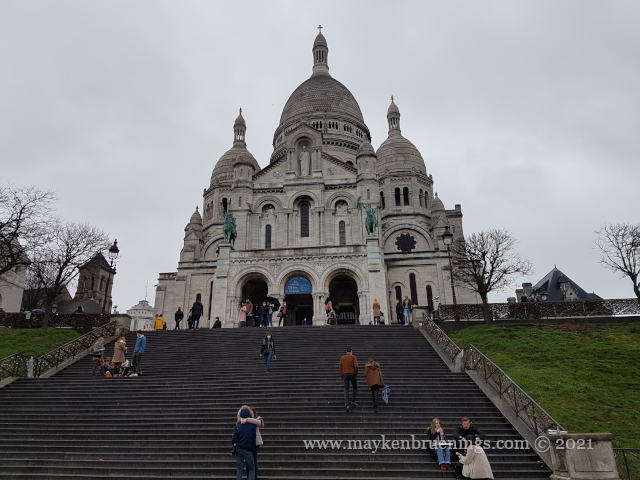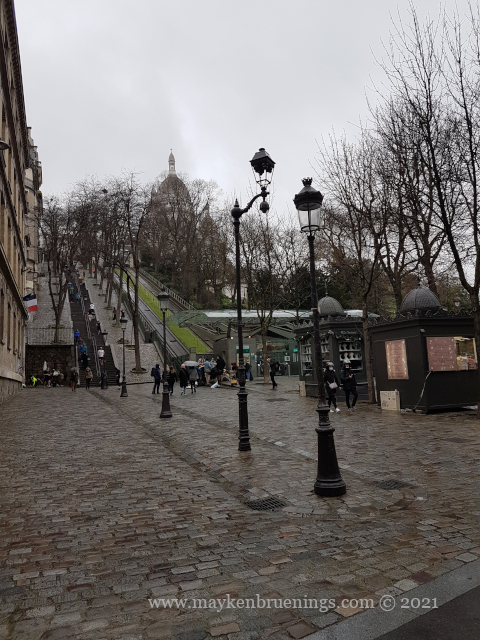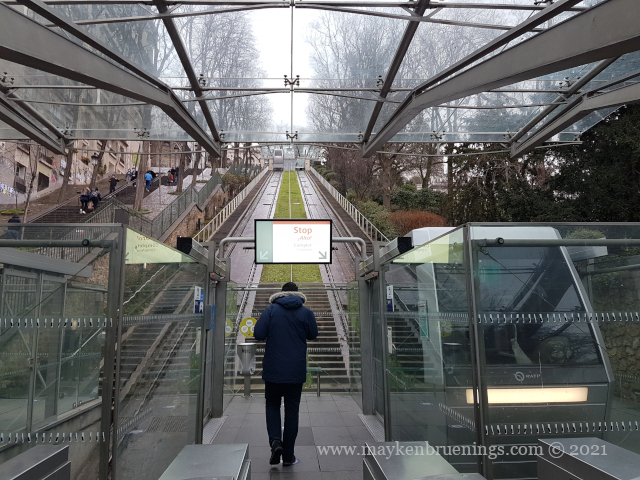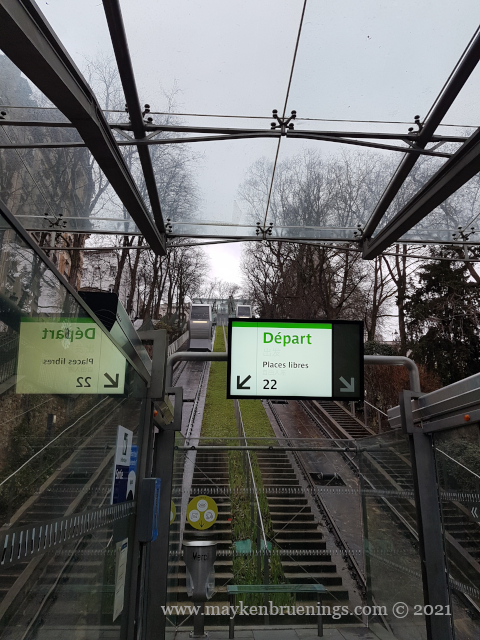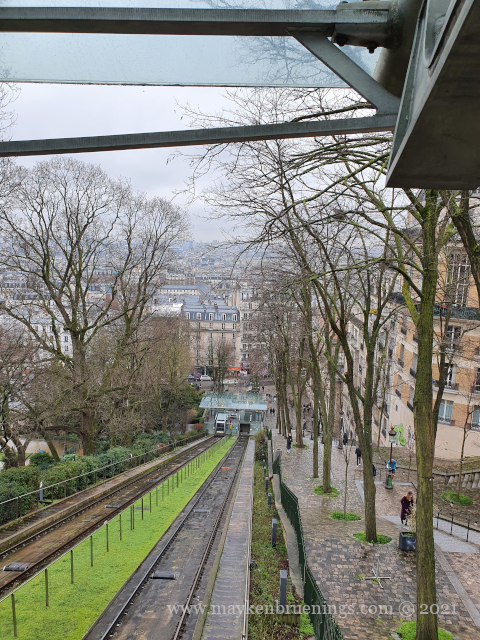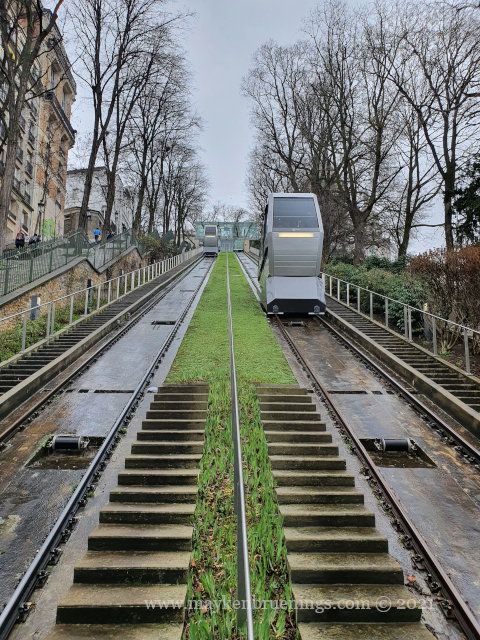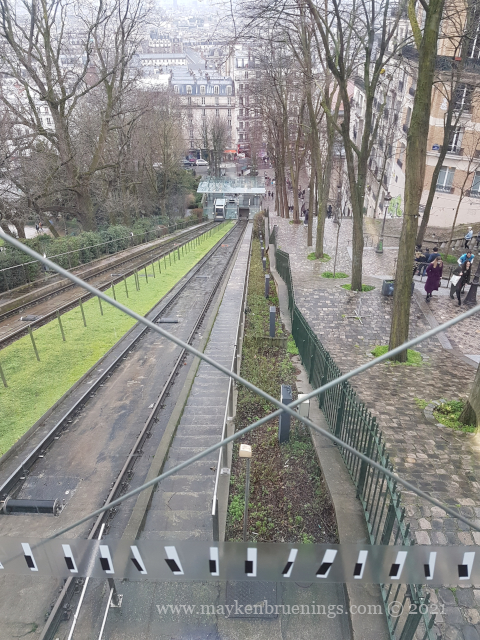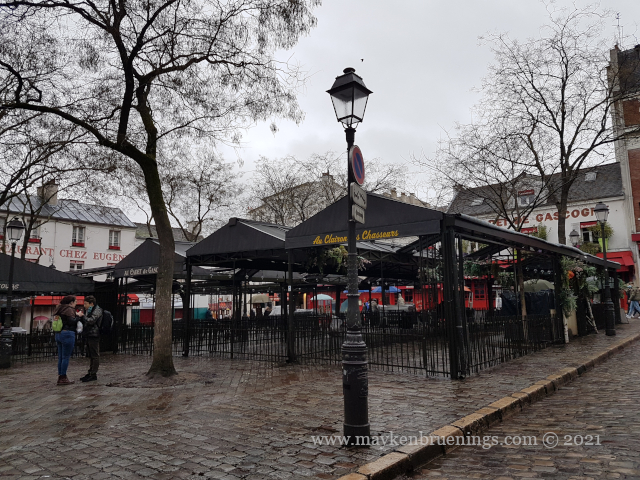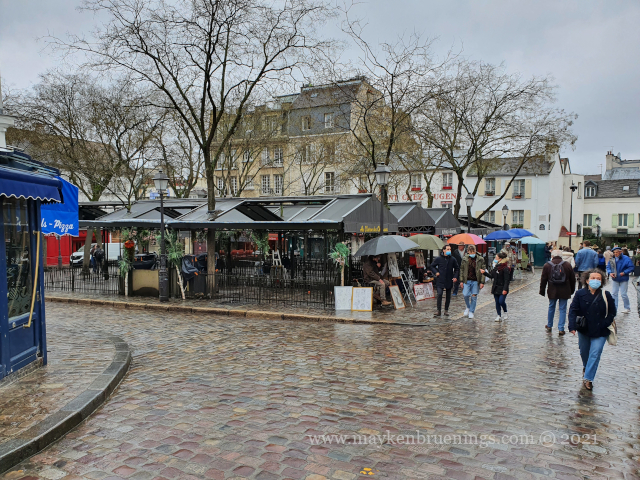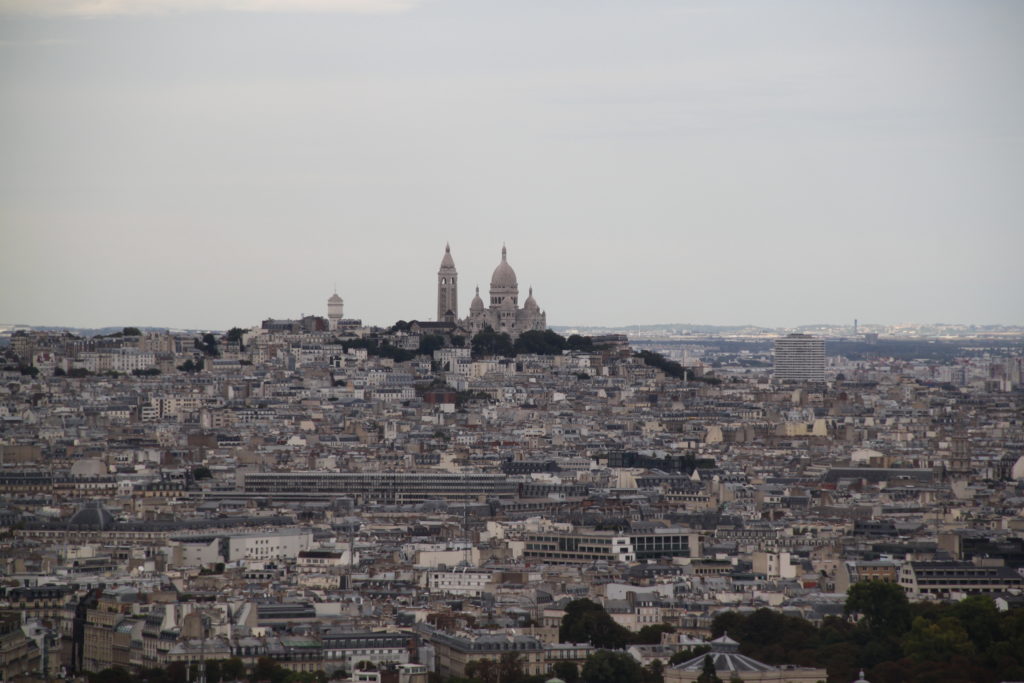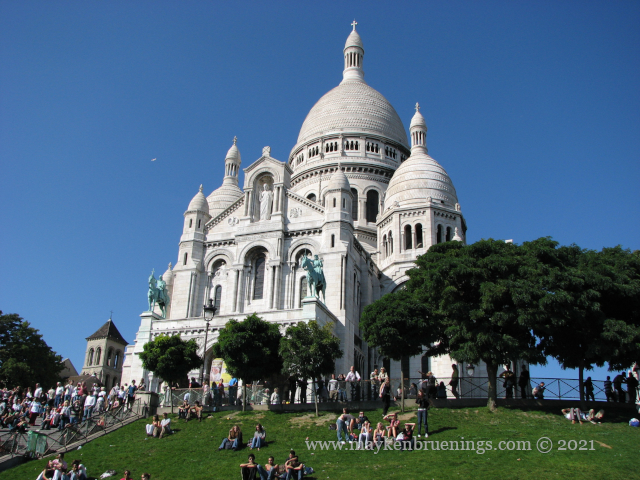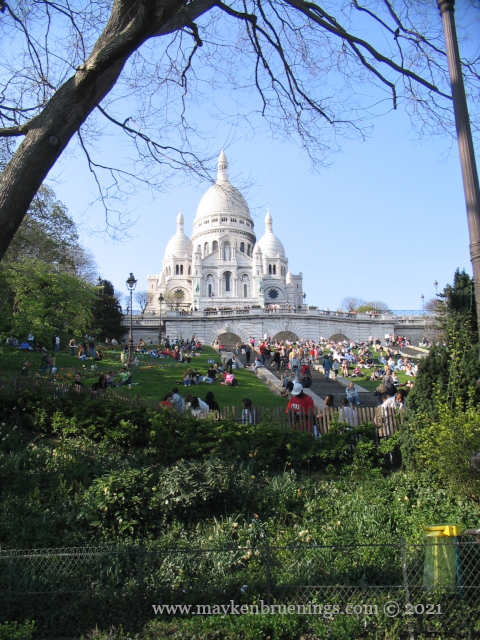The view from the 130m high hill Butte de Montmartre is quite spectacular.
If you dread the stairs leading up to the basilica, you can always take the funiculaire. It’s included in your Paris transport card. The ride only takes a few minutes.
Just around the corner from the Sacré-Cœur, the Place du Tertre awaits with its restaurant terraces and its artists who will happily draw your portrait, realistic or in caricature. (I mentioned this is one of the main tourist attractions, right?)
I might warn you, here as well as anywhere in and around Montmartre, including in the streets leading up from the métro station Pigalle, to watch out for your belongings. Given the crowds, this is pickpocket paradise.
Speaking of metro stations, at which one should you get off for Montmartre?
The answer is: it depends.
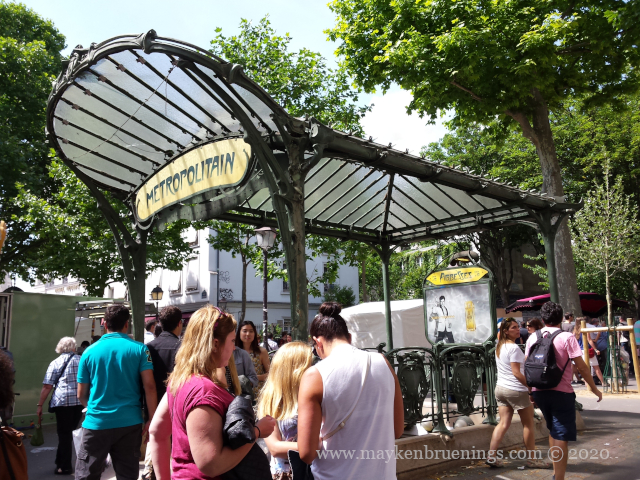
If you want to get to the Sacré-Cœur quickly, hop off the 12 at Abbesses. As the metro runs level but the terrain rises above, Abbesses is way below street level. There’s a long staircases for the adventurous tourists, and elevators for the others. Once you’re outside, it’s a five-minute walk to the funiculaire.

If you want a longer walk up, you can get off the metro 2 or 12 at Pigalle. Just head uphill and watch out for your belongings, and you’ll arrive at Abbesses station.
If you want to head straight for the basilica and are not afraid of tourist traps, get off the 2 at Anvers and you’ll have the Sacré-Cœur in your line of sight. Again, watch for your belongings.
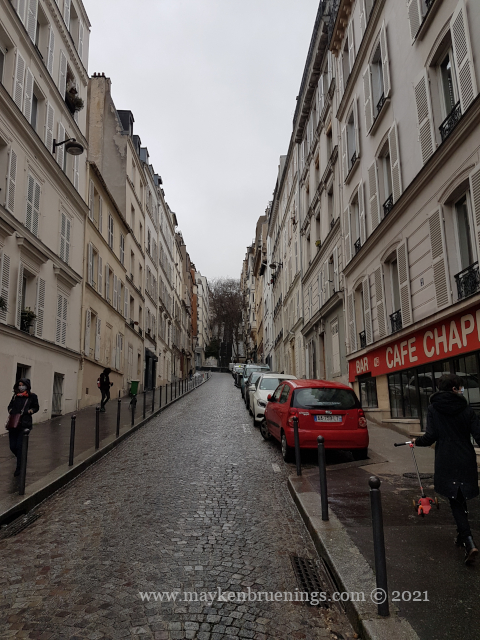
If you want to see the Moulin Rouge first, get off the métro 2 at Blanche. (Then get back on for Pigalle or Anvers.)
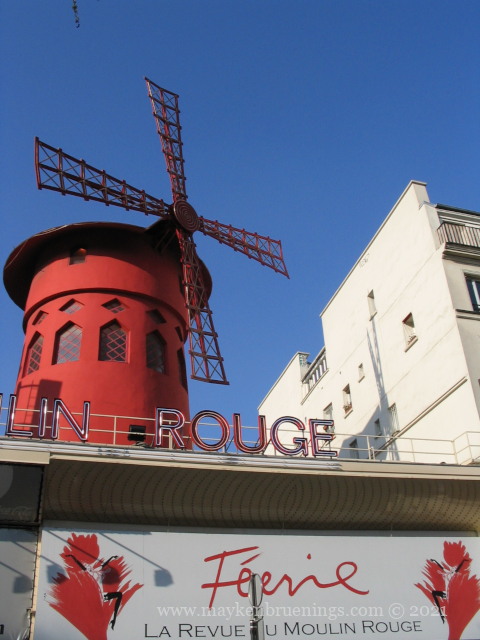
How would I go up? I’d get off the 12 at Jules Joffrin or Lamarck-Caulaincourt and take the number 40 bus (it starts at Jules Joffrin, so that’s your better option to get a seat). This bus will take you up the Butte de Montmartre from the back!
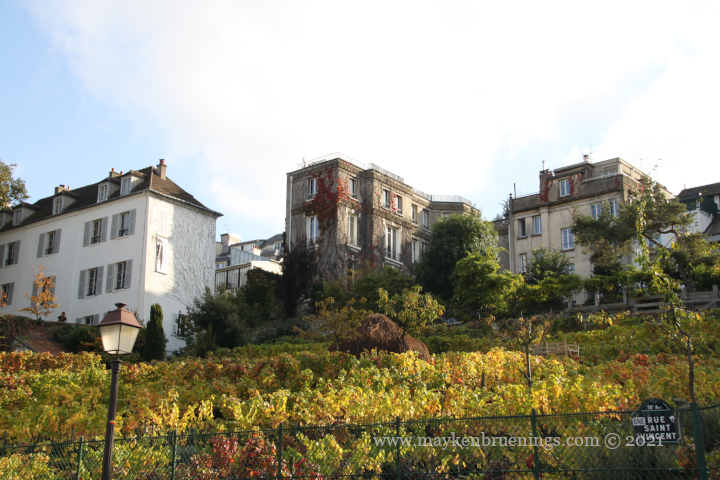
When you’re walking around Montmartre, you’ll be bound to notice one of the windmills. (I’m not talking of the Moulin Rouge!) In the past, there were 13 or more windmills on the hill, of which today only two are left. You can see them both from rue Lepic. The mills served to grind wheat, raisin, plaster and pebbles (for glass production). One even ground iris bulbs for the perfume industry!
The windmills inspired the painters who’d come to Montmartre, and you will find them in some of their paintings.
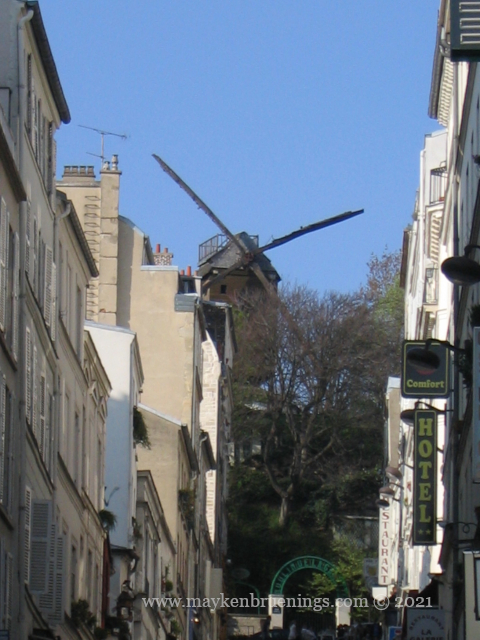
Finally, my personal movie recommendation for an (idealized) Montmartre: Amélie (Le fabuleux destin d’Amélie Poulin).
